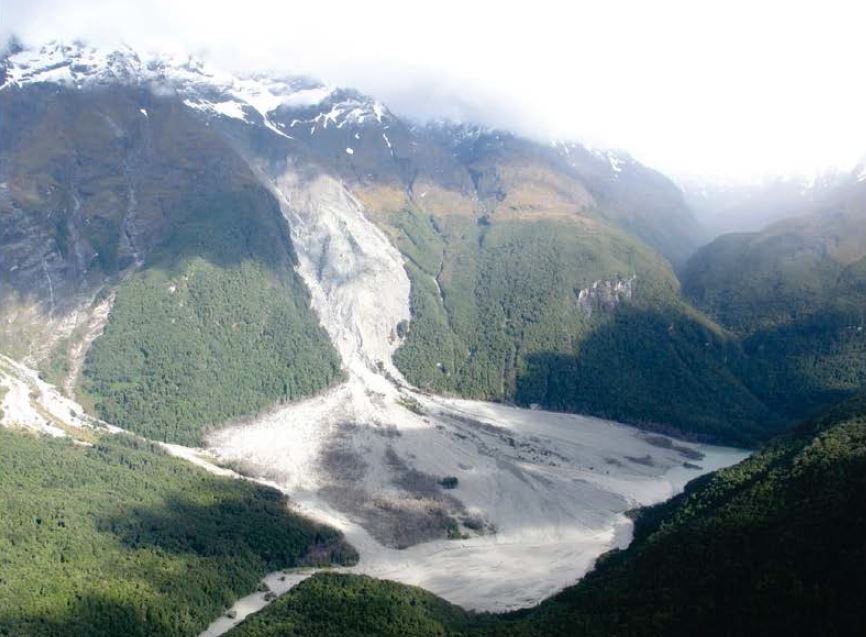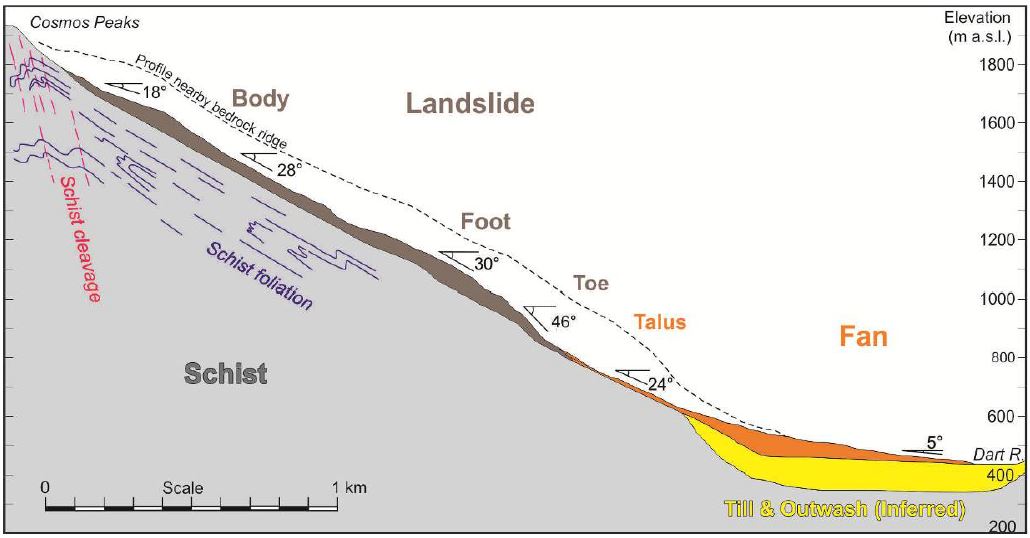14 April 2014
Dart River (Te Horo) landslide complex in New Zealand
Posted by Dave Petley
The Dart River (Te Horo) landslide
The Te Horo landslide on the Dart River in New Zealand is the subject of a new report (Cox et al. 2014) that has been prepared by GNS Science that has been made available online. The landslide is fascinating and unusual. It consists of a very large (56 million cubic metre, 0.9 square kilometre) compound rock and debris slide on a steep mountain side. Below the landslide is an enormous debris fan – this has an estimated volume of 100 million cubic metres – which has diverted the Dart River in the main valley below. This image, taken from Cox et al. (2014) provides a panoramic view of the landslide:
..
The slide caused some problems earlier this year when a period of more intense activity in the landslide led to increased sediment deposition on the debris fan. The volume of material entering the channel was sufficiently large that the fan blocked the river, allowing a large lake to form upstream:
..
Unusually, this type of valley blocking landslide is likely to pose a low level of hazard. Despite the large lake volume (estimated at 11-15 million cubic metres), the low gradient of the blockage and the presence of large boulders in the deposit means that a rapid breach event is unlikely. Thus, the lake is likely to persevere for some considerable time and may fill with sediment from upstream.
Interestingly, the landslide itself appears to be evolving quite quickly. This is a sketch cross section of the landslide from Cox et al. (2014):
..
The report notes that the area of activity of the landslide itself has moved from an elevation of 800 – 900 m in 2010-12; 900 – 1200 m in 2013; and 1000 – 1350 m in 2014.
There is a great more detail about the landslide, the debris fan and the lake, and many interesting images, in the report, so do take a look.
Reference
Cox, S.C., McSaveney, M.J., Rattenbury, M.S., and Hamling, I.J. 2014. Activity of the landslide Te Horo and Te Koroka Fan, Dart River, New Zealand during January 2014. GNS Science Report 2014/07. 45 pp.





 Dave Petley is the Vice-Chancellor of the University of Hull in the United Kingdom. His blog provides commentary and analysis of landslide events occurring worldwide, including the landslides themselves, latest research, and conferences and meetings.
Dave Petley is the Vice-Chancellor of the University of Hull in the United Kingdom. His blog provides commentary and analysis of landslide events occurring worldwide, including the landslides themselves, latest research, and conferences and meetings.
Reminds me of the slide we had in Alaska blocking the road to Valdez. Enjoy Your information. Best!motsfo
In case you are further interested we’ve left some footage on Youtube
http://www.youtube.com/watch?v=Y6vs_lnBqwY
enjoy!